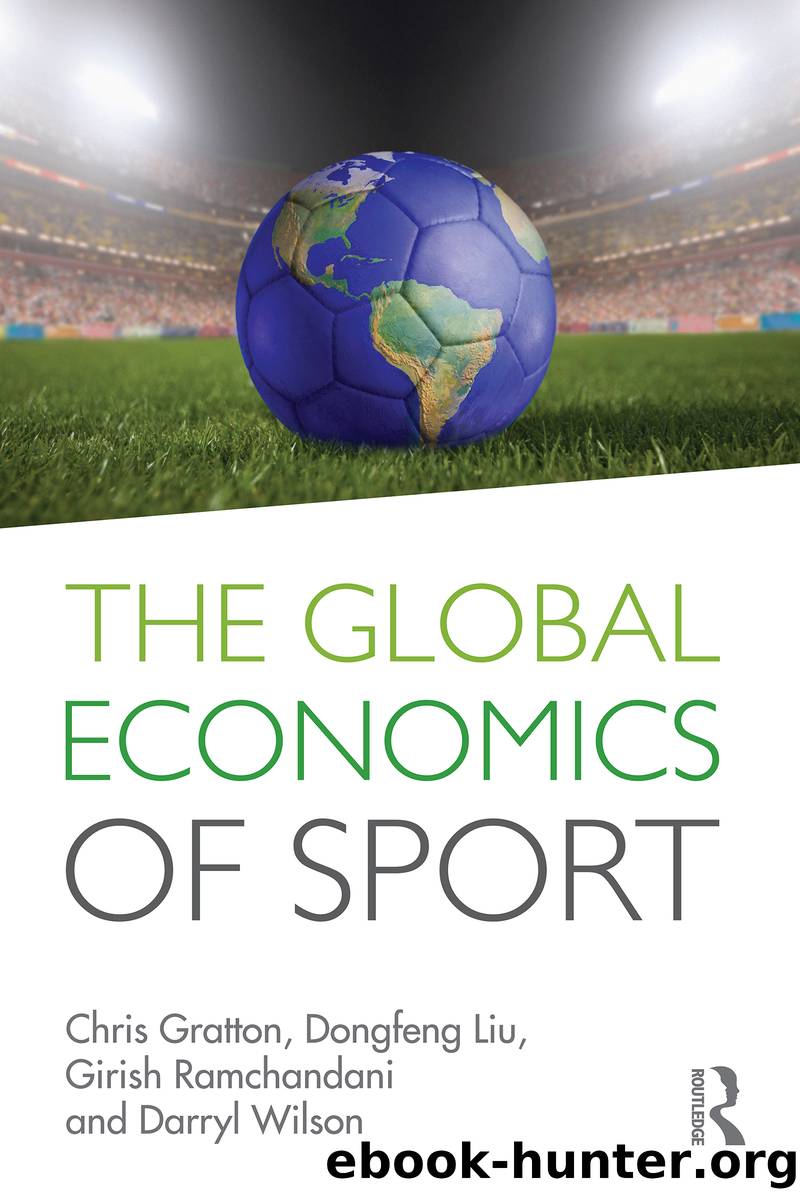The Global Economics of Sport by unknow

Author:unknow
Language: eng
Format: epub
Publisher: Taylor & Francis Group
Published: 2022-03-22T00:00:00+00:00
When Nike was getting pummelled on the subject in the 1990s, it typically had only two responses: anger and panic. Executives would issue denials, lash out at critics, and then rush someone to the offending supplier to put out the fire. But since 2002, Nike has built an elaborate program to deal with the charges of labour exploitation.
(Holmes 2004)
A new vice president for Corporate Responsibility was appointed and the first corporate responsibility report contained the admission that Nike knew far too little about what was happening in the factories and that its monitoring system was not working well enough.
By the end of the fiscal year ending May 2004, Nike was back on its growth trajectory. Its turnover shot up 15 per cent on the year before (see Figure 5.1), jumping from $10.7 billion to $12.3 billion. Its net income doubled from $474 million to $946 million. As Figure 5.1 indicates, this growth trajectory in turnover and net income then continued right through to the start of the global recession in 2008â9, with revenues peaking at $19.2 billion in 2009 and net income at $1.9 billion, both at almost double their 2004 values.
As Holmes (2004) indicates, this turnaround in financial performance was also associated with a turnaround in business approach: âThe New Nike ⦠No longer the brat of sports marketing, it has a higher level of discipline and performance.â Nike even became official US Olympic sponsor for Beijing 2008 and âtoned down its anti-Establishment attitudeâ (Holmes 2004). The financial turnaround was not only brought about by greater emphasis on corporate responsibility, but also by greater concentration on global business performance.
Not everything has changed. Nike still invests up to 13 per cent of turnover in marketing. It still has 31 per cent of the global sports footwear market and this generates over half of its revenues. However, overseas sales are now larger and growing faster than US sales. Sales in China, for instance, increased by more than 50 per cent in 2009 alone, the year of the global recession.
Transnational corporations in sport are not limited to producers or marketers of athletic goods (e.g. clothing, footwear, and equipment) but also now involve professional sports teams such as football clubs as well as media conglomerates that broadcast sport-related programming. The following case study of Real Madrid FC demonstrates how the organisation has gained the position of âcommercial leadershipâ in the global football market.
Download
This site does not store any files on its server. We only index and link to content provided by other sites. Please contact the content providers to delete copyright contents if any and email us, we'll remove relevant links or contents immediately.
| Entertainment | Sports |
| Park & Recreation |
Life 3.0: Being Human in the Age of Artificial Intelligence by Tegmark Max(4521)
The Sports Rules Book by Human Kinetics(3597)
ACT Math For Dummies by Zegarelli Mark(3567)
The Age of Surveillance Capitalism by Shoshana Zuboff(3432)
Blood, Sweat, and Pixels by Jason Schreier(3138)
Unlabel: Selling You Without Selling Out by Marc Ecko(2989)
Urban Outlaw by Magnus Walker(2952)
Hidden Persuasion: 33 psychological influence techniques in advertising by Marc Andrews & Matthijs van Leeuwen & Rick van Baaren(2788)
The Pixar Touch by David A. Price(2744)
Bad Pharma by Ben Goldacre(2736)
Project Animal Farm: An Accidental Journey into the Secret World of Farming and the Truth About Our Food by Sonia Faruqi(2667)
Brotopia by Emily Chang(2594)
The Content Trap by Bharat Anand(2497)
Slugfest by Reed Tucker(2424)
The Airbnb Story by Leigh Gallagher(2378)
Kitchen confidential by Anthony Bourdain(2319)
Coffee for One by KJ Fallon(2017)
Smuggler's Cove: Exotic Cocktails, Rum, and the Cult of Tiki by Martin Cate & Rebecca Cate(1995)
Beer is proof God loves us by Charles W. Bamforth(1936)
